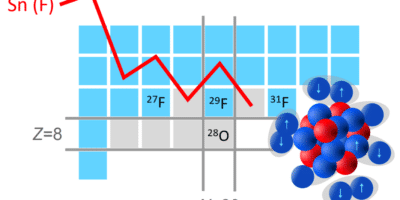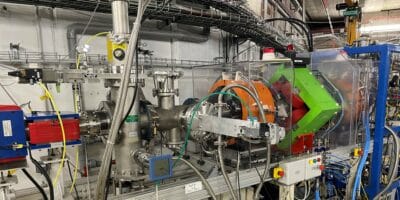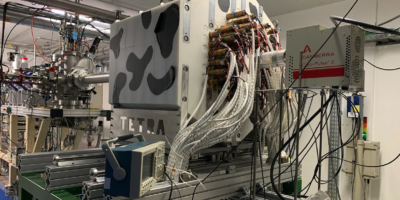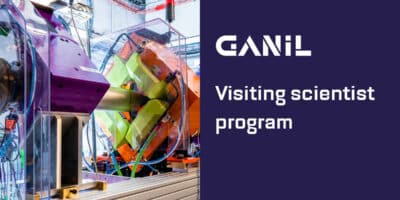- Homepage
- >
- Scientists
- >
- News & Highlights
News & Highlights 2024
News from 2024

November 4, 2024
Scientific annual report 2023
This report is a snapshot of GANIL's activities. It is also a signature, an open window on the complex and intense activities taking place at the laboratory, in pursuit of a rich scientific program, gathered into different thematics in…

September 6, 2024
The unexpected neutron ballet of oxygen-28
The stability of an atomic nucleus can be measured by the energy required to dislodge its nucleons (protons and neutrons) from the outermost orbitals. In so-called magic nuclei, whose orbitals are fully populated, the energy required is generally greater. One…

June 28, 2024
GANIL expands its energy range to reach for the stars
A GANIL beam line was completely redesigned to transport low-energy radioactive beams (1 to 2 MeV/u), a range of new energies for GANIL radioactive ions. The new device allows to slow down the beams of the CIME cyclotron while measuring…

May 21, 2024
A change in viewpoint on helium 4 brings nuclear physics out of a dead-end.
An experimental measurement recently identified a discrepancy between theoretical predictions and the observation of the helium 4 nucleus. The work of an international collaboration of theoreticians elaborated a different vision of the configurations of nucleons and their coupling in helium…

April 22, 2024
Search for a neutron dark decay in ⁶He
The helium 6 nucleus was proposed as a potential candidate to probe the neutron dark decay model. Due to the purity and great intensity of the ⁶He⁺ radioactive beam (up to 300 million nuclei per second) produced by the GANIL…

April 5, 2024
Call for applications 2025 Visiting Scientist at GANIL, France
GANIL welcomes international scientists to apply to its new visitor program. The objective of this visiting-scientist program is to provide an international venue for research on nuclear physics, interdisciplinary research, accelerator and instrumentation developments. The program intends to strengthen and…
